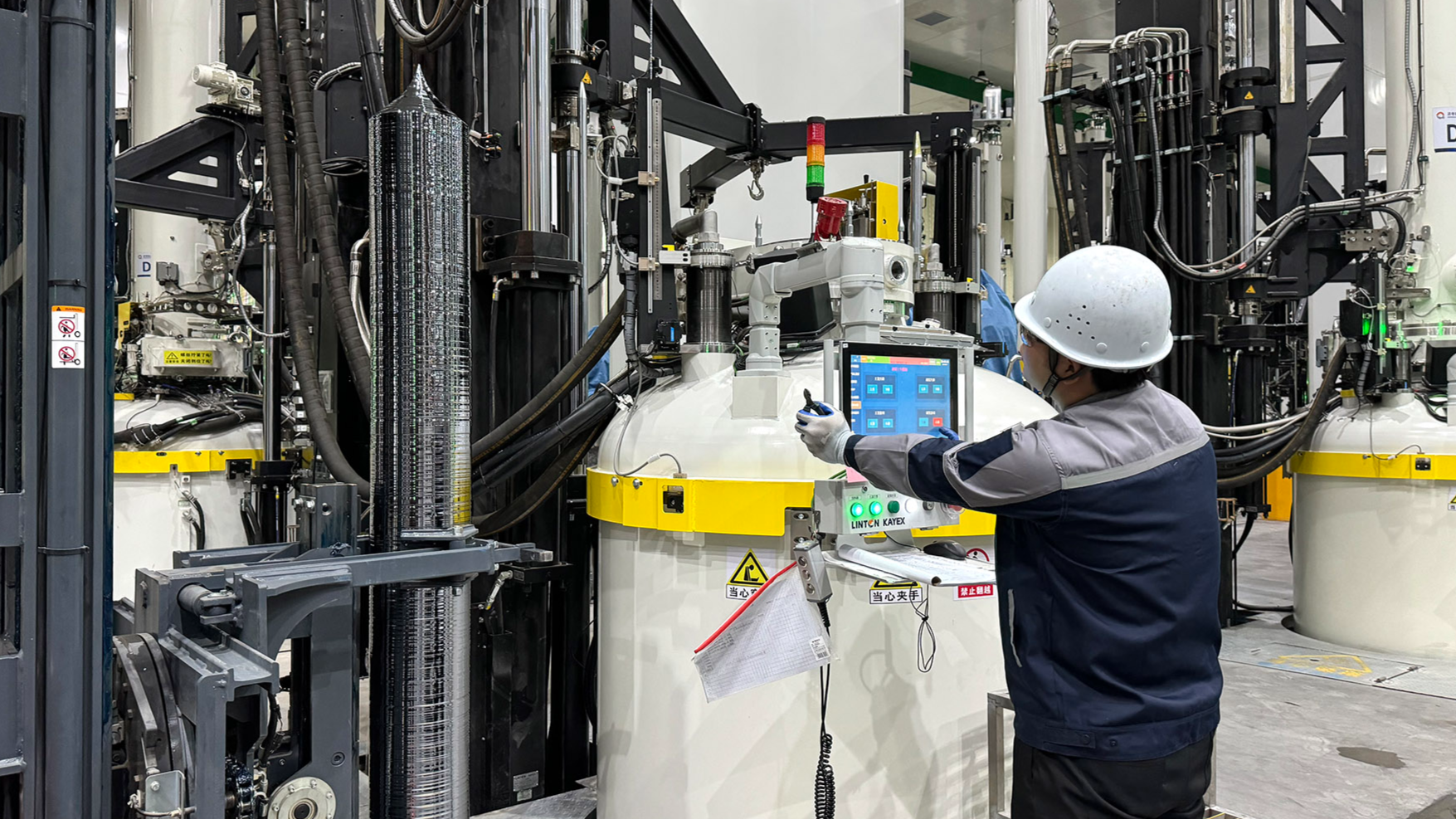
BEIJING - China's gross domestic products (GDP) grew 4.8 percent year-on-year in the first nine months of 2024, official data showed on Friday.
The GDP reached around 94.97 trillion yuan ($13.33 trillion) in the January-September period, data from the National Bureau of Statistics showed.
In the third quarter, the economy expanded 4.6 percent year-on-year and went up 0.9 percent on a quarterly basis, according to the bureau.
Despite a complicated external environment and emerging challenges at home, the Chinese economy has posted generally stable performance, Sheng Laiyun, deputy head of the bureau, told a press conference Friday.
"Positive factors driving a steady economic recovery accumulated and increased in September," Sheng said, stressing that most indicators on production and demand improved and market expectations also became better.
More efforts will be made to strengthen the coordination of existing and incremental policies and push for the swift and effective policy implementation in a bid to achieve the full-year economic and social development targets, Sheng added.
ALSO READ: World Bank, Barclays raise GDP forecast for China
Industrial output
The country's value-added industrial output, an important economic indicator, went up 5.8 percent year-on-year in the first three quarters, according to the data from the bureau.
In September, the industrial output rose 5.4 percent year-on-year, and the growth pace was 0.9 percentage points faster from the previous month, the data showed.
The industrial output measures the activity of enterprises each with an annual main business turnover of at least 20 million yuan.
The operation of the industrial industry is a bright spot of the economic performance this year, said Sheng, citing that the growth rate of the industrial output in the first nine months is one percentage point higher than that of the gross domestic product.
The contribution rate of the industrial output to economic growth was almost 40 percent in the first three quarters, said Sheng.
Despite the challenges posed by external shocks and internal structural adjustments, China's industrial sector has demonstrated strong competitiveness as it has solid foundations, he said.
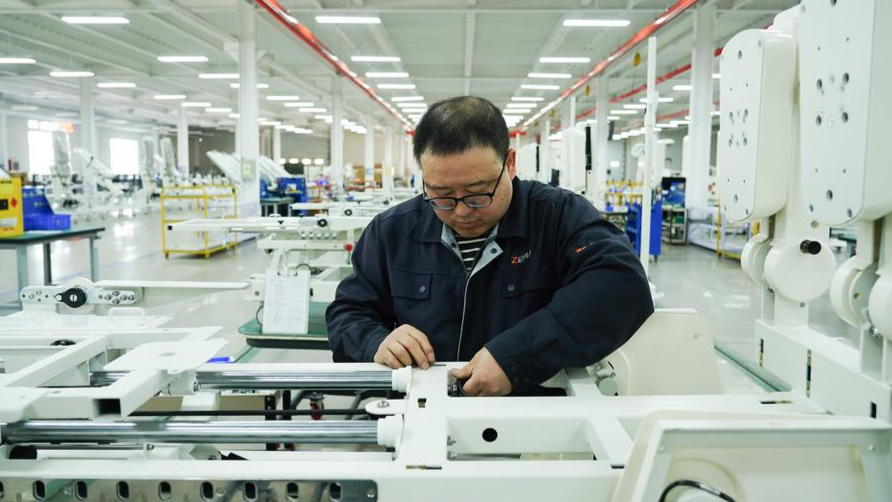
A breakdown of the data showed the output of the equipment manufacturing sector, which took up one-third of the overall industrial output, climbed 7.5 percent in the Jan-Sept period.
The high-tech manufacturing industry also posted strong growth, with its output up 9.1 percent in the first half, according to the bureau.
The country's production of new energy vehicles, integrated circuit and 3D printing equipment products surged 33.8 percent, 26 percent and 25.4 percent, respectively, in the first three quarters.
In recent years, the industrial sector is becoming more high-end, more intelligent and greener, said Sheng.
Meanwhile, the export delivery value of the industrial sector climbed 4.1 percent year-on-year in the first three quarters.
With the implementation of supporting policies in the third quarter, China's industrial economy will maintain a stable development trend with improvements in both quality and efficiency, Sheng said.
ALSO READ: China's manufacturing sector picks up amid sustained economic recovery
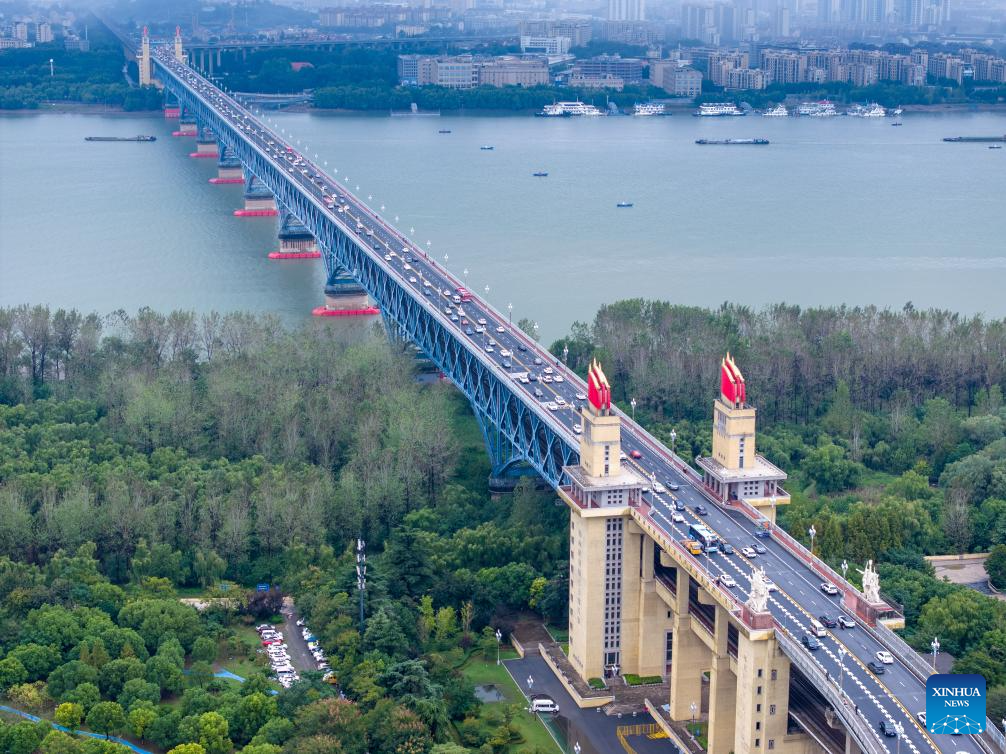
Fixed-asset investment
The bureau's data also indicated that China's fixed-asset investment rose 3.4 percent year-on-year in the first three quarters.
"The growth rate, unchanged from the rate logged in the January-August period, marks the first time in multiple months that the slowdown in fixed-asset investment was halted," said Sheng, the deputy head of the bureau.
The investment totaled 37.8978 trillion yuan during the period, the bureau said in a statement.
Investment in infrastructure construction rose 4.1 percent from a year ago during the January-September period, and manufacturing investment increased 9.2 percent.
Excluding the property sector, the country's fixed-asset investment climbed 7.7 percent in the first three quarters. Investment in property development fell 10.1 percent.
ALSO READ: NDRC: China leads world in charging infrastructure installation number
With the property sector excluded, private investment grew 6.4 percent from January to September, the official data showed.
Investment in high-tech industries posted robust growth, up 10 percent. In breakdown, investment in high-tech manufacturing and high-tech services gained 9.4 percent and 11.4 percent.
Investment in high-tech industries contributed 27.1 percent to the growth of the total fixed-asset investment, indicating that spending on innovation was constantly increasing, Sheng told reporters.
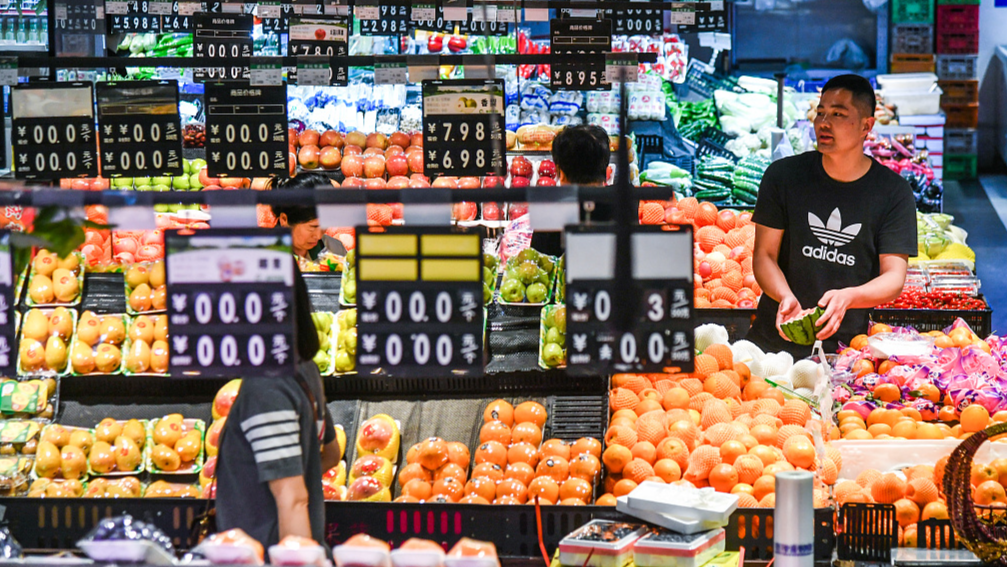
Retail sales
On the country's consumer market, the retail sales of consumer goods went up 3.3 percent year-on-year in the first three quarters, the bureau said.
The country's retail sales of consumer goods totaled 35.3564 trillion yuan during the period, data from the bureau showed.
During the first three quarters of the year, rural consumption gained 4.4 percent year-on-year, and the catering sector saw its revenue rise by 6.2 percent.
Online sales remained a bright spot, rising by 8.6 percent year-on-year in the January-September period. In particular, sales of physical goods increased by 7.9 percent and accounted for a quarter of total retail sales during the period.
Pro-consumption policies, including the consumer goods trade-in program, have played a significant role in unleashing the domestic demand, the bureau's deputy director Sheng said at the same press conference.
ALSO READ: China's economy seen to stay on upward trajectory amid headwinds
China introduced a large-scale equipment upgrade and consumer goods trade-in program in March this year to expand domestic demand and shore up the economy, and stepped up policy support in July with an extra funds injection of 300 billion yuan via ultra-long special treasury bonds.
Boosted by the policies, retail sales rose 3.2 percent year-on-year in September alone, with sales of automobiles reversing months of decline and edging up 0.4 percent year-on-year, Sheng said.
Home appliance sales saw a notable 20.5-percent jump in September, up 17.1 percentage points from the previous month.
Sheng noted that while some policies need time to fully take effect, he called for local authorities to expedite their implementation to further consolidate the economy's recovery momentum.

Home prices
Major Chinese cities saw a stabilization in the price decline of commercial residential homes in September, along with improved expectations for the property sector, the official data showed.
The decline in the prices of commercial residential homes in China's 70 large and medium-sized cities stabilized on a month-on-month basis last month, according to the bureau.
In the country's first-tier cities, namely Beijing, Shanghai, Guangzhou and Shenzhen, new home prices edged down by 0.5 percent, compared with a 0.3-percent drop in the previous month. Second- and third-tier cities both registered declines of 0.7 percent month-on-month.
In September, prices of second-hand homes fell by 1.2 percent in first-tier cities month-on-month, and 0.9 percent in second-tier and third-tier cities, the bureau said.
"Since late September, confidence in the property market has strengthened and expectations have improved," said Wang Zhonghua, chief statistician of the Department of Urban Surveys of the bureau, citing a monthly questionnaire survey conducted in 70 large and medium-sized cities.
ALSO READ: China to expand white list mechanism to stabilize property sector
The survey showed that 58.3 percent of respondents expect new commercial residential housing prices to remain stable or rise in the next six months, while 45.4 percent expect the same for second-hand residential housing.
Compared to the results of the previous month's survey, these figures have increased by 10 and 6.5 percentage points, respectively.
"China's real estate market has started bottoming out after three years of adjustment," Minister of Housing and Urban-Rural Development Ni Hong said at a press conference on Thursday.
"Particularly, since the end of September, there has been a significant increase in the number of visits to new property projects and in the number of sale contracts. Transactions on pre-owned homes have also gone up. There have been positive changes in the market," Ni said.
China has rolled out a slew of policies to bolster the real estate sector, including cutting minimum down payment ratios, abolishing the commercial mortgage rate floors for first and second homes, and establishing a re-lending facility that supports local state-owned enterprises in using such funds to purchase commercial homes for affordable housing.
ALSO READ: China exploring reforms in housing sales system to revitalize property sector

Urban unemployment
The official data also showed China's job market remained generally stable in the first three quarters as the surveyed urban unemployment rate dropped on a year-on-year basis.
The surveyed urban unemployment rate on average stood at 5.1 percent in the first three quarters, down 0.2 percentage points from the same period last year, the bureau said.
In September, the surveyed urban unemployment rate in the country came in at 5.1 percent, down 0.2 percentage points from the previous month.
This year, Chinese authorities have stepped up efforts to stabilize employment, particularly the employment of college graduates, said deputy head of the bureau Sheng.
While overall employment faces some pressure, the job market remains stable, Sheng noted, citing continued economic growth, the expanding service sector, and demographic changes as contributing factors.
ALSO READ: China to prioritize employment policy reforms to support modernization
Sheng also acknowledged that structural problems remained, urging further efforts in driving stable economic growth and creating more jobs to promote high-quality full employment.
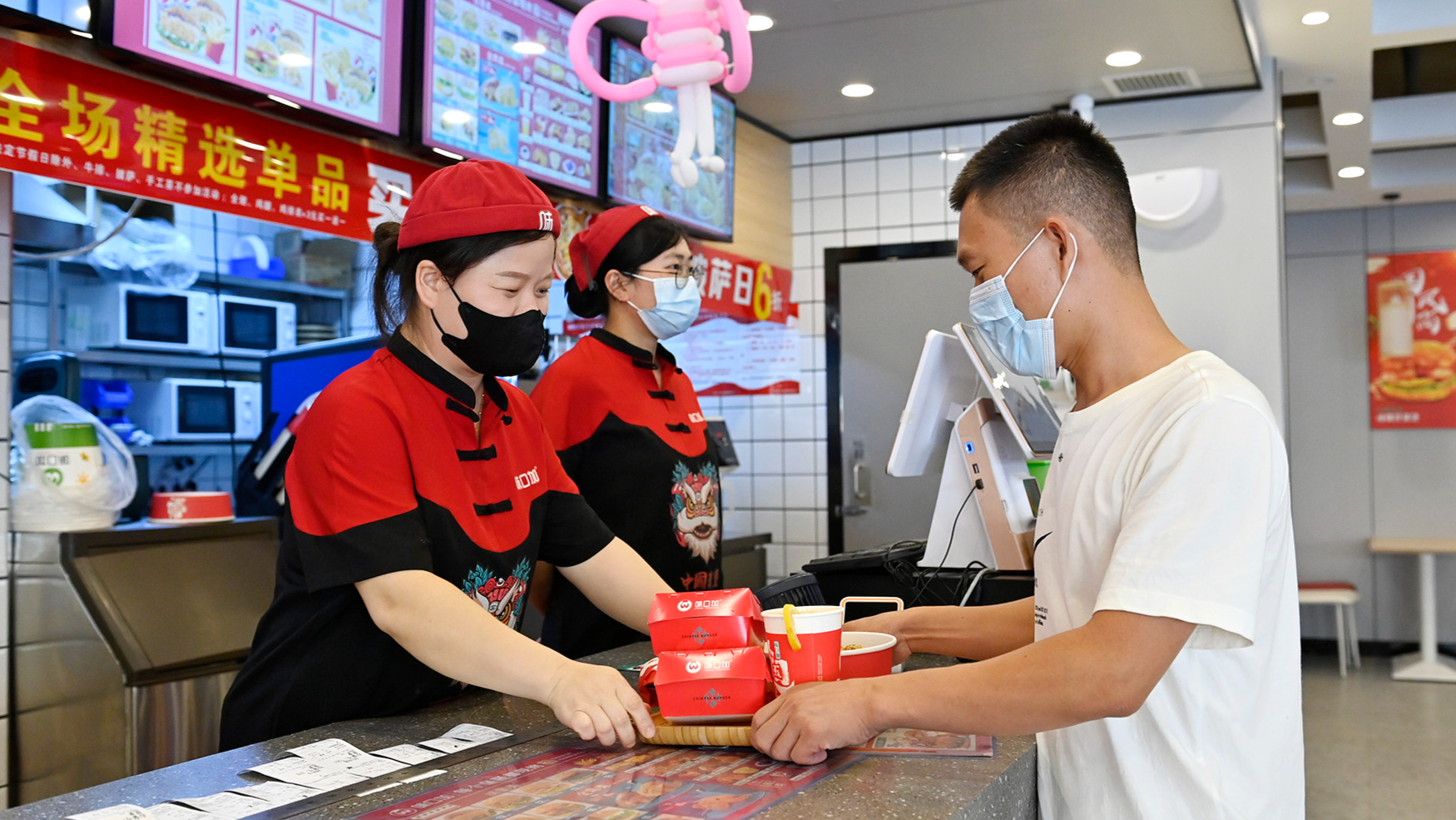
Service output
Friday's data also indicated that China's value-added service output increased by 4.7 percent year-on-year in the first three quarters.
The value-added output of information transmission, software and IT service sectors increased 11.3 percent, while that of catering and accommodation sectors expanded 6.3 percent year-on-year.
The index gauging the country's service industry output rose 5.1 percent year-on-year in September, increasing by 0.5 percentage points from the previous month.
In breakdown, the sub-index on information transmission, software and IT services reported the most robust growth of 11.4 percent, followed by 9.7 percent for leasing and business services and 6.5 percent for the financial sector.
READ MORE: China's economic output continues expansion in flood season
Data also showed multiple industries were seeing a high level of business activity, including postal services; telecommunication, broadcasting and satellite transmission services; internet, software and information technology services; and monetary and financial services sectors.
In the first three quarters, retail sales in the service sector rose 6.7 percent year-on-year.


